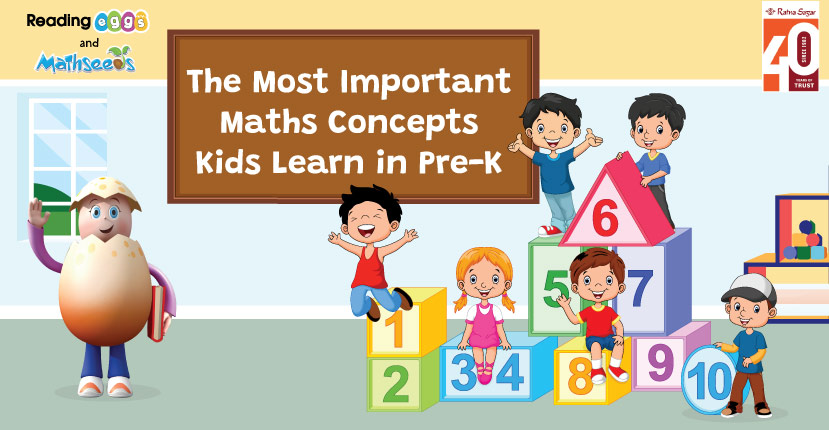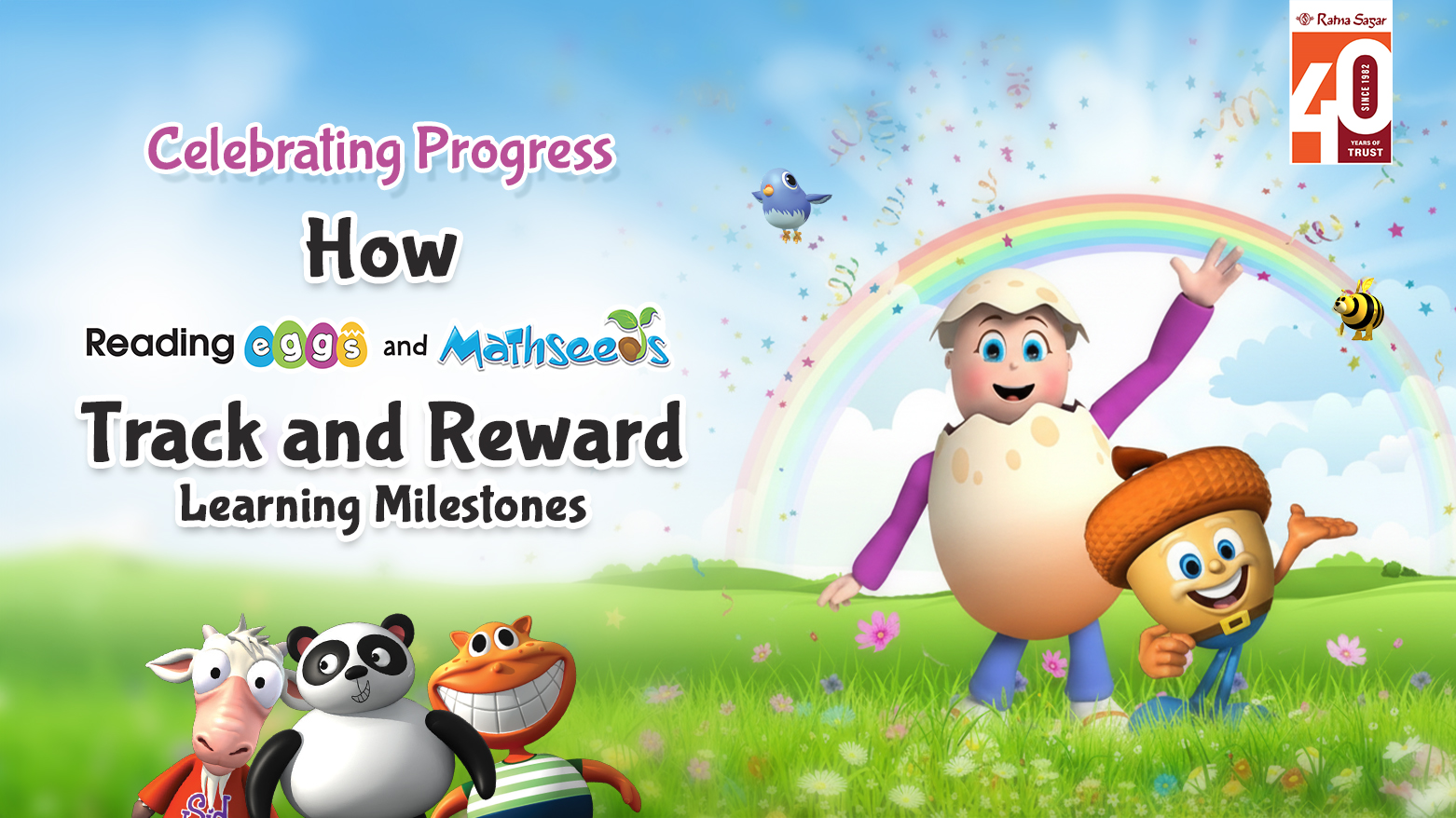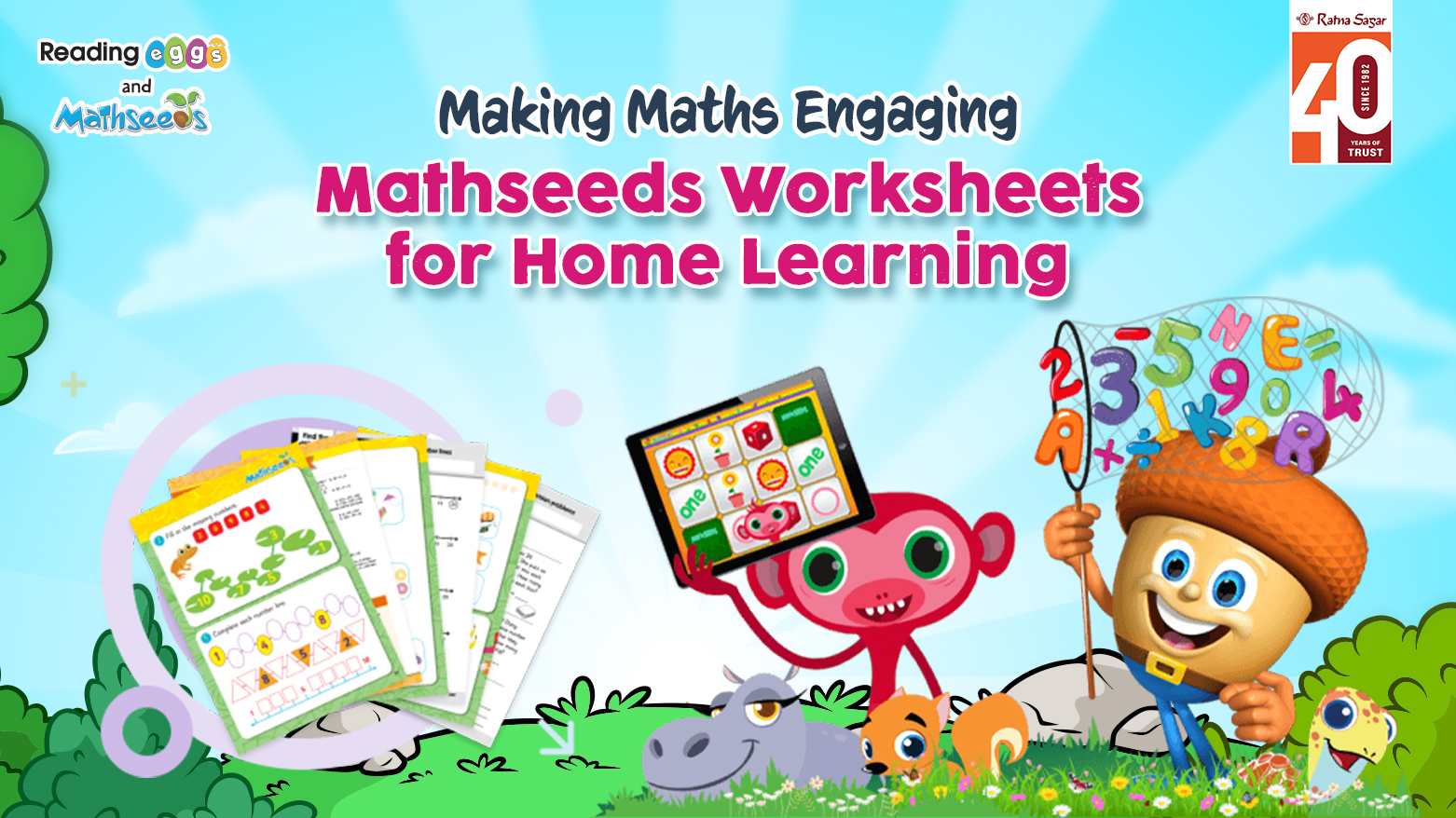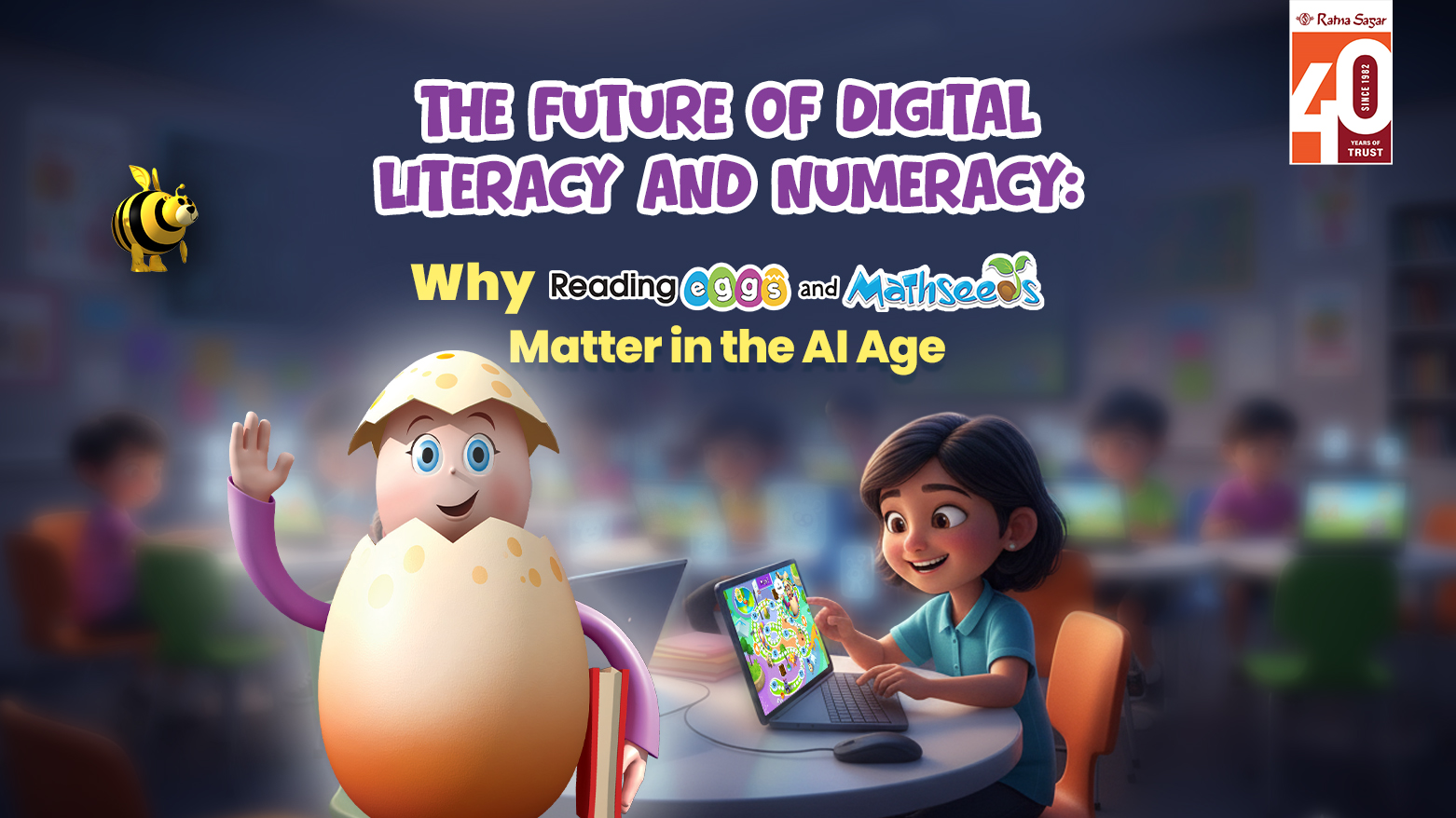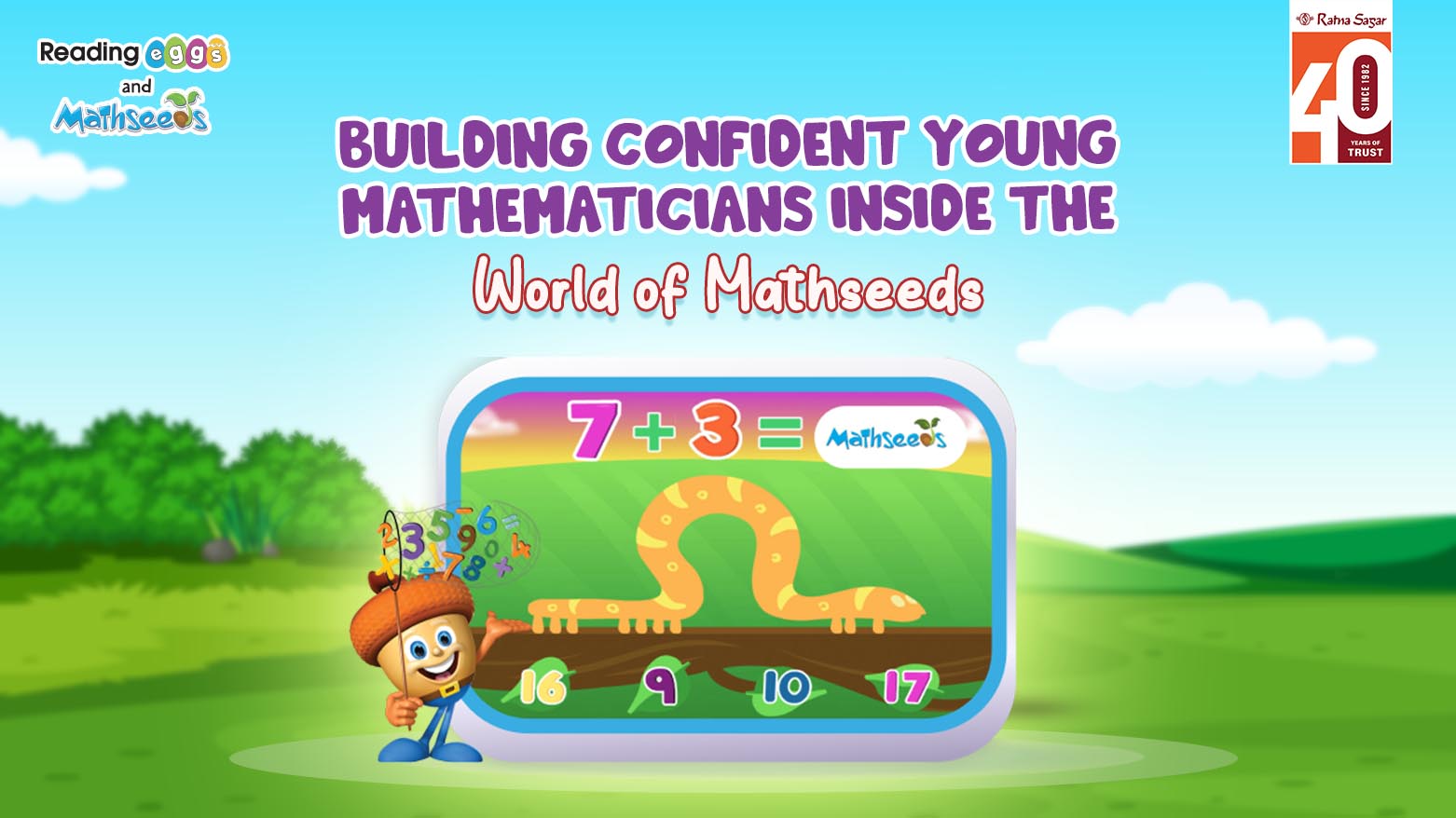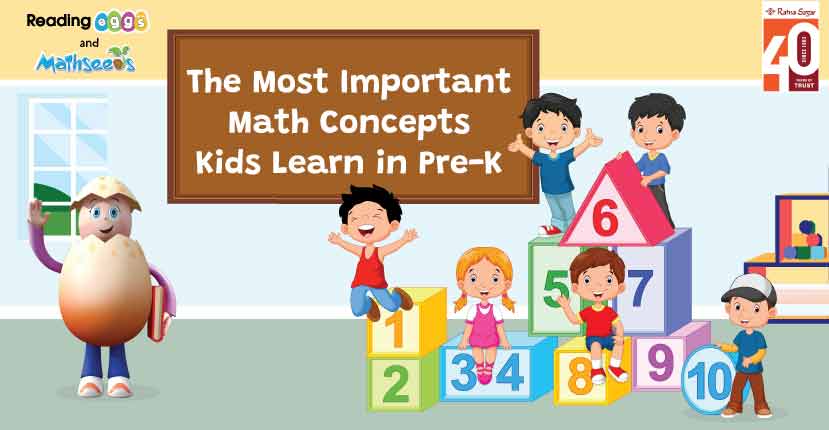
The Most Important Maths Concepts Kids Learn in Pre-K
Mathematics can be a tricky subject. Sometimes it can be a bed of roses, but other times it can leave your child scratching their head. So, before kids begin their academic journey, it's important for them to grasp some basic mathematical concepts. So, what are some important maths concepts that kids must learn in pre-kindergarten years?
Book 7 days FREE trial For Reading Eggs with Ratna Sagar
Measurement
Pre-K children can start developing foundational measurement skills through playful and hands-on activities. Here are some basic measurement skills that are appropriate for preschoolers: 1. Comparing Sizes Have children compare the sizes of different objects. Use terms like big, bigger, small, and smaller. Arrange objects in order of size or have them match objects of similar sizes. For example, give them a basket of fruits and ask them to arrange the fruits in ascending or descending order of their sizes. 2. Length and Height Introduce the concept of length by comparing the length of two objects. Use descriptive words like long, longer, short, and shorter. Have them line up objects from shortest to tallest or vice versa. 3. Weight Discuss weight by comparing the heaviness of different objects. Use terms like heavy, heavier, light, and lighter. Let them experience lifting and holding objects of varying weights. For example, give them objects like bottles, toys, and tumblers. Prompt them with questions such as, "Which object feels heavier in your hand?" or "Can you find something lighter than the toy you're holding? 4. Capacity Introduce the concept of capacity by comparing the amount of liquid in different containers. Use terms like full, empty, more, and less. Allow them to pour water between containers to explore these concepts. 5. Volume Explore volume by filling containers with different materials like sand or rice. Discuss concepts such as full, half-full, and empty. Give them empty jars and encourage them to fill these containers with sand or marbles. Ask them questions like, "Can you describe when the jar is full?" or "What does it mean when the jar is half-full?" This interactive approach allows children to not only visually understand volume but also physically engage with the materials, promoting a deeper comprehension of these fundamental concepts. 6. Temperature Introduce basic temperature concepts by discussing hot and cold. Use terms like warmer, cooler, and explore these sensations with objects or touch. Give them materials at different temperatures and engage them in questions such as, "Can you feel the warmth from this object?" or "Is this material cooler than the one you touched before?"
Book 7 days FREE trial For Reading Eggs with Ratna Sagar
7. Using Non-Standard Units Use everyday objects as non-standard units for measurement. For example, use paper clips to measure the length of a pencil. Encourage hands-on exploration by asking questions like, "How many paper clips long is the pencil?" 8. Spatial Relationships Teach concepts of position and direction, such as over, under, beside, behind, and in front of. 9. Comparing Quantities Develop an understanding of more and less by comparing sets of objects. Engaging children in these activities not only introduces them to basic measurement concepts but also helps develop their vocabulary, spatial awareness, and fine motor skills. Keep the activities playful and age-appropriate to foster a positive learning experience.
Counting
In the pre-K years, children can start building a strong foundation in counting through engaging and interactive activities. Here are some basic counting skills that are appropriate for preschoolers: 1. Counting Objects: Have children practise counting everyday objects, such as toys, blocks, or fingers. Use a one-to-one correspondence, touching each object as they count. 2. Number Recognition: Introduce numbers visually. Show them numerals and encourage them to recognize numbers 1 through 10. Use number charts, flashcards, or incorporate numbers into everyday activities. 3. Counting Aloud Practise counting aloud in a sequential order. Start with a small set of numbers and gradually increase. Count forwards and backward to reinforce the concept of numbers in a sequence. 4. Number Songs and Rhymes Sing counting songs and rhymes that involve numbers, such as "Five Little Ducks" or "Ten in the Bed." 5. Counting Fingers Connect counting to their own bodies by counting fingers and toes. Incorporate finger counting into activities and songs. 6. Counting with Objects Use objects like counting bears, buttons, or beads for hands-on counting activities. Group them into sets and count the sets. 7. Counting in Daily Activities Integrate counting into daily routines, such as counting steps while walking or counting items during snack time. 8. Sorting and Counting Combine sorting and counting by organizing objects into groups and then counting each group. Remember to make counting activities enjoyable and incorporate them into play to maintain a positive and engaging learning experience for preschoolers.
Patterns
Developing pattern recognition skills in pre-K sets the stage for understanding more complex mathematical concepts later on. Here are some basic pattern skills that are appropriate for preschoolers: 1. Colour Patterns Start with simple colour patterns, such as red-blue-red-blue, and encourage children to identify and extend the sequence. Use objects, toys, or building blocks of different colour to create patterns. 2. Shape Patterns Introduce patterns using basic shapes, like circle-square-circle-square. Encourage children to identify, copy, and create their own shape patterns. 3. Size Patterns Explore patterns based on size, such as small-medium-large-small. Use objects like nesting cups or building blocks to demonstrate size patterns. 4. AB Patterns Begin with the basic AB pattern (e.g., car-truck-car-truck) and help children recognize and extend this alternating pattern. Use everyday objects or toys to create AB patterns. 5. Clapping or Stomping Patterns Incorporate movement by creating patterns with claps or stomps. For example, clap-clap-stomp, clap-clap-stomp. 6. Sound Patterns Introduce auditory patterns with simple sounds, like hand claps or drum beats. Create and mimic patterns using different sound sequences. 7. Pattern Books Read books that highlight patterns, helping children recognize and predict recurring sequences. Point to the patterns in the illustrations and discuss them. 8. Patterned Clothing Incorporate patterns into clothing, such as striped shirts or polka-dot dresses. Ask children to identify and describe the patterns they see. 9. Snack Patterns Use snacks like crackers or fruit to create edible patterns. For instance, grape-cracker-grape-cracker. 10. Patterned Playdough or Clay Roll out different colour of playdough or clay in a pattern and ask children to continue the sequence. 11. Patterned Movement Create movement patterns, such as hopping twice, then spinning once, and encourage children to follow the sequence. 12. Simple Puzzles Use basic puzzles with patterns, helping children recognize the order and arrangement of pieces. Encourage exploration and creativity as children engage with patterns through various activities. These experiences lay a strong foundation for mathematical understanding in the years to come.
Geometry
In pre-K, introducing basic geometry skills helps children develop an early understanding of shapes, spatial relationships, and patterns. Here are some fundamental geometry skills that are suitable for preschoolers: 1. Shape Recognition Teach common shapes such as circles, squares, triangles, and rectangles. Encourage children to identify and name these shapes in their environment. 2. Sorting by Shape Provide objects or images of various shapes and ask children to sort them into groups based on shape. Use everyday items like blocks, toys, or pictures for sorting activities. 3. Building with Shapes Foster hands-on learning by using blocks or other building materials to create structures with different shapes. Discuss the shapes they use and encourage them to describe their creations. 4. Identifying Shapes in the Environment Take walks and point out shapes in the environment, such as a circular clock or a square window. Encourage them to find shapes in everyday settings. 5. Spatial Relationships Introduce basic spatial concepts like above, below, beside, in front of, and behind. 6. Patterns with Shapes Create simple patterns using shapes, such as circle-square-circle-square, and ask children to continue the sequence. Use objects or drawings to make these patterns. 7. Constructing with 3D Shapes Introduce basic 3D shapes like cubes and cylinders. Explore building with 3D shapes using playdough or modelling clay. 8. Playing Shape Games Engage in shape-related games, such as "I Spy" with shapes in the room. Incorporate shape recognition into interactive games or puzzles. 9. Matching Shapes Use shape cards or objects and have children match identical shapes. Play games that involve finding matching shapes in a set. 10. Exploring Symmetry Introduce the concept of symmetry by folding paper and creating symmetrical shapes. Use objects like butterflies to discuss symmetry in nature. 11. Describing Shapes Encourage children to describe shapes based on their attributes, such as the number of sides or corners. Introduce terms like curved or straight sides, circles, triangles and other shapes. Making geometry fun and interactive helps lay the groundwork for more advanced mathematical concepts in the future. Activities that involve play, exploration, and observation contribute to a positive early experience with geometry.
Time
Begin discussing basic concepts of time, such as morning, afternoon, and evening. Introduce simple sequencing activities, like the order of daily routines. Guide them through the different parts of the day by discussing activities typically associated with morning, afternoon, and evening. Encourage engagement by asking questions like, "What do you usually do in the morning when you wake up?" and "What activities happen in the evening before bedtime?" Introduce the idea of sequencing by having them arrange pictures or cards depicting daily activities in chronological order.
Fractions
In pre-K, children are typically introduced to foundational maths concepts, but the formal introduction to fractions often occurs in later grades. However, you can lay the groundwork for understanding fractions through informal and age-appropriate activities. Here are some basic fraction-related skills suitable for preschoolers: 1. Equal Parts: Introduce the concept of equal parts by dividing simple objects, like a sandwich or a piece of fruit, into halves. Use words like "two equal parts" or "two halves" to describe the division. 2. Sharing and Fairness: Connect the idea of fractions to sharing. For instance, if there are two friends and one cookie, each friend gets half. Reinforce the notion that fractions represent a fair sharing of something. 3. Visual Representation: Use visual aids, such as drawings or pictures, to represent basic fractions like halves and wholes. Draw simple shapes and discuss how they can be divided into equal parts. While all of these are important concepts for kids to learn, it is equally important for them to be treated with kindness and sensitivity. Allow them to stroll the lands of fun and freedom as they learn. Let them make mistakes and ask you curious questions. After all, who wouldn’t love a fun play session with a child? Also Read What Are The Activities To Improve Reading Skills For Kids? Art Games for Kids to Inspire Creativity
